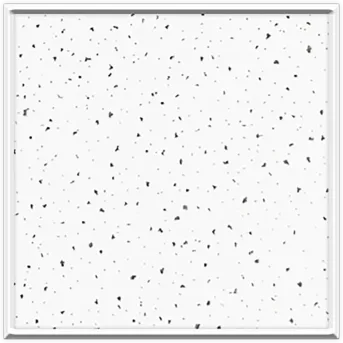10 月 . 31, 2024 18:27 Back to list
Choosing the Right Ceiling Material for Your Grid System Installation
The Versatility of Grid Ceiling Materials
Grid ceilings, also known as drop ceilings or suspended ceilings, have garnered popularity in various construction and renovation projects due to their aesthetic appeal and functional benefits. They provide a practical solution for concealing wiring, plumbing, and ductwork, while enhancing the overall ambiance of a space. The materials used for grid ceilings play a significant role in determining not only the look and feel of the environment but also its acoustics, fire resistance, and moisture control.
Material Options for Grid Ceilings
The choice of material for grid ceilings can vary widely, each type offering distinct benefits. The most commonly used materials include mineral fiber, metal, and gypsum board.
1. Mineral Fiber Panels These are perhaps the most popular choice for grid ceilings. Made from a mixture of natural and synthetic materials, mineral fiber panels are lightweight, easy to install, and highly effective in sound absorption. They are available in a range of textures and colors, allowing for creativity in design. Furthermore, they are fire-resistant and can withstand high humidity, making them ideal for areas such as bathrooms and kitchens.
2. Metal Panels For a more modern and sleek appearance, metal grid ceiling materials are an excellent option. Typically made from aluminum or steel, metal panels can be easily integrated into contemporary designs. They are durable and resistant to sagging, but may not provide the same level of sound insulation as mineral fiber. However, many manufacturers offer insulated options that address this drawback. The reflective nature of metal surfaces can also enhance lighting in a space, giving it a brighter ambience.
3. Gypsum Board Known for its versatility, gypsum board can be used to create a seamless ceiling finish, eliminating the grid look typical of suspended ceilings. It offers excellent fire resistance and can provide a high-end look if finished correctly. Gypsum ceilings can be painted or textured to match any decor style. However, this material requires more effort for installation and may not be as flexible when it comes to accessing the space above the ceiling.
grid ceiling material

Acoustic Performance
One of the critical functions of grid ceiling materials is their impact on acoustics. In commercial environments, particularly, acoustic performance can significantly influence the comfort and productivity of occupants. Mineral fiber panels are designed with sound absorption properties, making them ideal for offices, schools, and healthcare facilities. By reducing noise levels, they help create a more conducive environment for work and communication.
Fire Safety and Moisture Control
In addition to aesthetics and acoustic benefits, the fire safety properties of grid ceiling materials are paramount. Mineral fiber and metal panels generally meet fire codes and regulations, providing a level of protection in case of fire. Moreover, the choice of moisture-resistant materials is crucial in preventing mold and mildew, especially in humid climates.
Conclusion
When selecting grid ceiling materials, it is essential to consider factors such as aesthetics, performance, safety, and maintenance. With a variety of choices available, homeowners and designers alike can find the perfect solution that meets their specific needs. Whether opting for the classic appeal of mineral fiber, the modern look of metal, or the seamless finish of gypsum, grid ceilings remain a practical and stylish choice for enhancing interior spaces.
-
Revolutionizing Interior Design with Ceilings t grid Suspended SystemNewsOct.29,2024
-
Revolutionizing Ceiling Design with ceiling access panel with Gypsum Tile WaterproofNewsOct.29,2024
-
Revolutionizing Interior Design with PVC Gypsum Ceiling: A Comprehensive GuideNewsOct.29,2024
-
Elevating Interior Design with High quality Mineral Fiber Ceiling TilesNewsOct.29,2024
-
Revolutionizing Interior Design with PVC Gypsum Ceiling: A Comprehensive GuideNewsOct.29,2024
-
Elevating Interior Design with High-Quality Mineral Fiber Ceiling Tiles: A Comprehensive GuideNewsOct.29,2024







